Reason for White Spots on Mint Leaves: Causes and Treatment
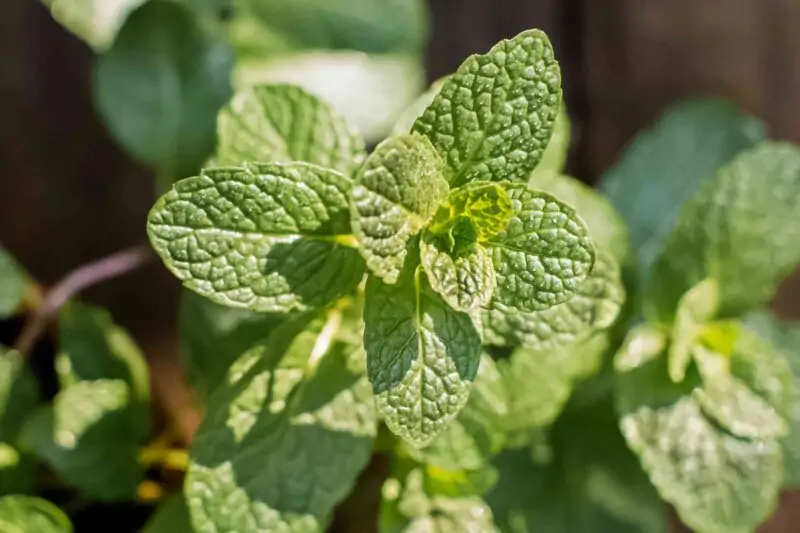
Mint is a well-liked herb that enhances flavor to many dishes and drinks. But have you ever noticed white spots on mint leaves? These spots can be an indication of a problem with your mint plants. Healthy mint plants not only add taste to our food but also provide us with important nutrients, such as vitamin C, calcium, and iron.
In this article, we will discuss the possible causes of white spots on your mint plant’s leaves so that you can keep them healthy and flavorful.
White Spots on Mint Leaves: Their Causes
Infestations of pests or fungi in the garden are common causes of white patches. These common causes of these unsightly blemishes include:
Fungal Infections: Powdery Mildew
Powdery mildew is a fungus that causes white spots. It appears as small circular patches or a felt-like coating. It affects stem tips and leaf undersides. The fungus can spread quickly through wind-borne spores.
Powdery mildew spores thrives best in humid conditions. This is common during summer months when temperatures fluctuate between 60°F-80°F (15°C – 27°C). The spores can spread quickly, infecting nearby plants.
Symptoms:
- Small circular patches
- Felt-like coating over affected areas Causes:
- Humid weather conditions
Pest Problems: Spider Mites and Thrips
Spider mites are another reason for tiny white dots on mint leaves. These bugs feed on the sap from the underside of leaves, causing damage. Thrips can also cause similar damage, including discoloration and patches around the edges of leaves.
Symptoms:
- Tiny white or yellow speckles Causes:
- Spider mites and thrips
Viral Infections: Mosaic Virus
Mint plants can be infected with the mosaic virus. This viral infection causes leaves to have irregular patches in shades of green, yellow, and white. Insects such as aphids or leafhoppers spread this virus from plant-to-plant.
Symptoms:
- Irregular patches on leaves Causes:
- Insects like aphids or leafhoppers
Other Factors
White spots on mint leaves may occur due to various factors, including nutrient deficiencies, water hardness, dust accumulation, pests, and fungal infections such as powdery mildew. Mint leaves turning white could be an indication of these issues affecting the plant. Nutrient deficiencies are common when soil pH levels aren’t balanced correctly, which can affect growth patterns and nutrient uptake in the mint plant leaves.
Water hardness can cause mineral buildup in irrigation systems, reducing water flow efficiency and leading to the appearance of white spots or patches on the leaves. Dust accumulations block important air exchange processes and slow down metabolism in the plant, causing leaves to turn white. Additionally, pests like spider mites and fungal infections such as powdery mildew can attack your mint, causing white dots or white stuff to appear on the leaves.
To maintain a healthy garden, it’s essential to identify the reason for white spots on your mint leaves and address the underlying causes for white spots. Regular monitoring, proper plant care, and prompt treatment can help prevent these issues and ensure the healthy growth of your mint plant. Remember, even if your mint leaves have white spots, they are generally safe to eat, as long as they aren’t infected by harmful pests or fungi.
Symptoms:
- Irregular patches on leaves Causes:
- Nutrient deficiencies, water hardness, and dust accumulation
In the next section, we will explore how to identify and diagnose white spots on mint plant leaves.
Identifying and Diagnosing White Spots on Mint Leaves
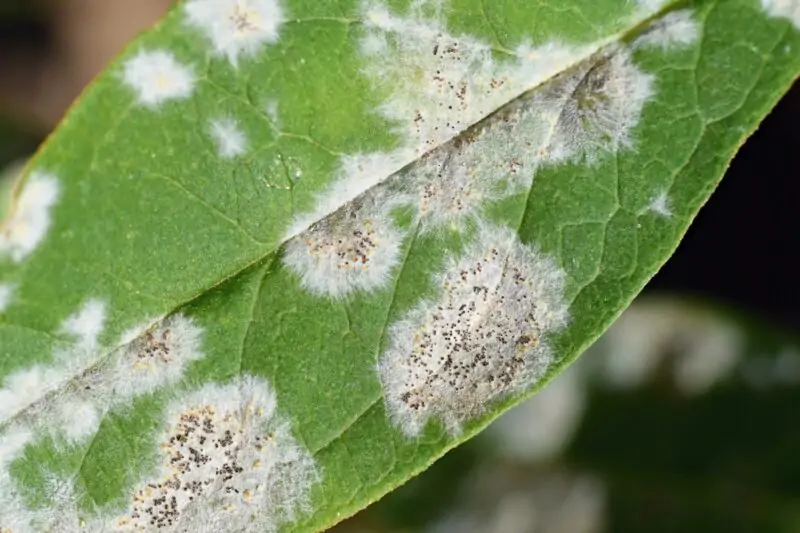
Mint is a popular herb used in many different ways, from flavoring dishes to making refreshing drinks. However, if you notice white spots appearing on your mint leaves, it could indicate a problem with the plant’s health. Here are some common causes of white spots on mint leaves and how to identify them.
Appearance of White Spots
White spots can appear in different forms depending on their cause:
Powdery Mildew
Powdery mildew looks like a fine dusting of flour or sugar over the surface of the leaves. It usually starts as small patches but can spread quickly if not treated.
Spider Mites and Thrips
Spider mites and thrips are tiny insects that feed off plants by piercing their cells with sharp mouthparts. They leave behind small yellow or white spots on the mint leaves where they have fed which eventually turn into larger discolored areas.
Mosaic Virus
The mosaic virus causes irregular, mosaic-like patterns on the leaves, with a mix of green, yellow, and white colors. These patterns can vary in size and shape and may cause the leaves to curl or become distorted.
Diagnosing the Cause
To identify the cause of the white spots on your mint leaves, you’ll need to closely examine the affected plant. Here are some steps to help you diagnose the problem:
- Inspect the leaves: Look for patterns, colors, and the presence of insects or fungal growth.
- Check the environment: Consider humidity, temperature, and watering patterns. These factors can contribute to fungal infections or pest infestations.
- Assess your plant’s overall health: A weak or stressed plant is more susceptible to diseases and pests.
- Consult with an expert: If you’re still unsure about the cause, consult with a local horticulturist or extension agent for advice.
Once you’ve determined the cause of the white spots, you can take appropriate action to treat and prevent further damage.
Treating and Preventing White Spots on Mint Leaves
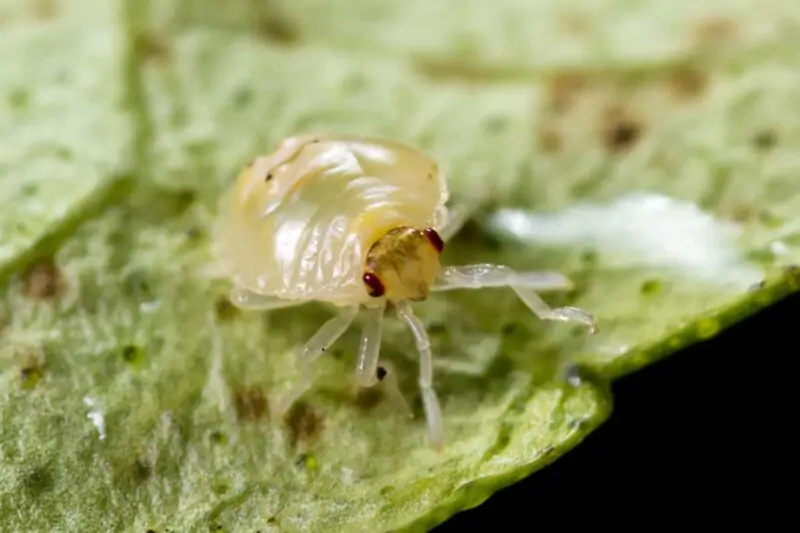
After diagnosing the cause of white spots on your mint leaves, it’s time to take action. Here are some treatment and prevention tips for common causes:
Powdery Mildew
- Increase air circulation around the plants.
- Avoid overhead watering.
- Apply fungicides specifically designed for powdery mildew.
Spider Mites and Thrips
- Spray the plant with a mild soap solution to dislodge the pests.
- Release natural predators, such as ladybugs or lacewings, to control the infestation.
- Apply insecticidal soap or horticultural oil to treat severe infestations.
Mosaic Virus
- Remove and destroy infected plants to prevent the virus from spreading.
- Keep your garden clean and free of weeds that can harbor insects.
- Control insects, like aphids and leafhoppers, that spread the virus.
Other Factors
- Test and adjust soil pH levels to ensure optimal nutrient uptake.
- Use a water softener to reduce water hardness.
- Regularly clean dust from leaves to maintain proper air exchange.
By addressing the cause of the white spots on your mint leaves, you can ensure your plants remain healthy and produce flavorful herbs for your enjoyment.
Maintaining a Healthy Mint Plant
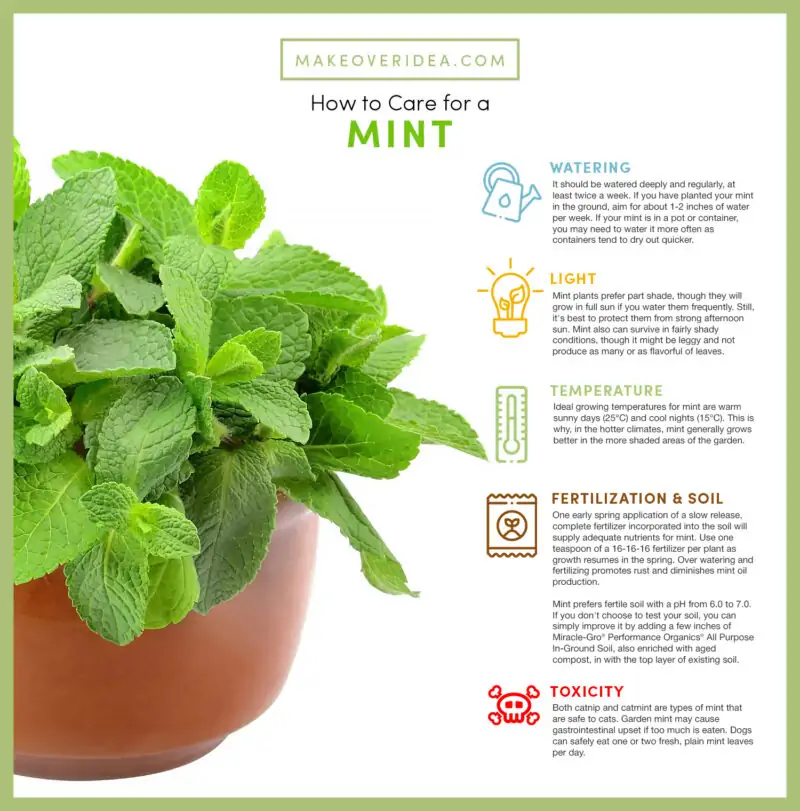
Mint plants are relatively easy to grow and maintain, but proper care is essential for optimal growth and flavor. Here are some tips on how to keep your mint plant healthy:
Proper Plant Care
Make sure your mint plant gets at least six hours of direct or indirect sunlight each day. If you’re growing it indoors, place the pot near a sunny window.
Ensure that the soil is well-drained and rich in nutrients. Use organic compost or fertilizer occasionally.
Trim off any damaged leaves regularly using clean pruning shears or scissors.
Watering and Soil Considerations
Water your mint plant often during hot summer months to prevent wilting. However, avoid overwatering as this can lead to root rot. Let the soil surface dry out between waterings, as wet conditions can promote fungal infections like powdery mildew.
Repot your mint plant every couple of years to provide fresh nutrients for its roots.
Regular Monitoring
Check both sides of all leaves and stems regularly, including under the leaves. White spots often appear here first before spreading elsewhere. Take action immediately if something seems off with your plants.
Common Questions Regarding White Spots on Mint Leaves
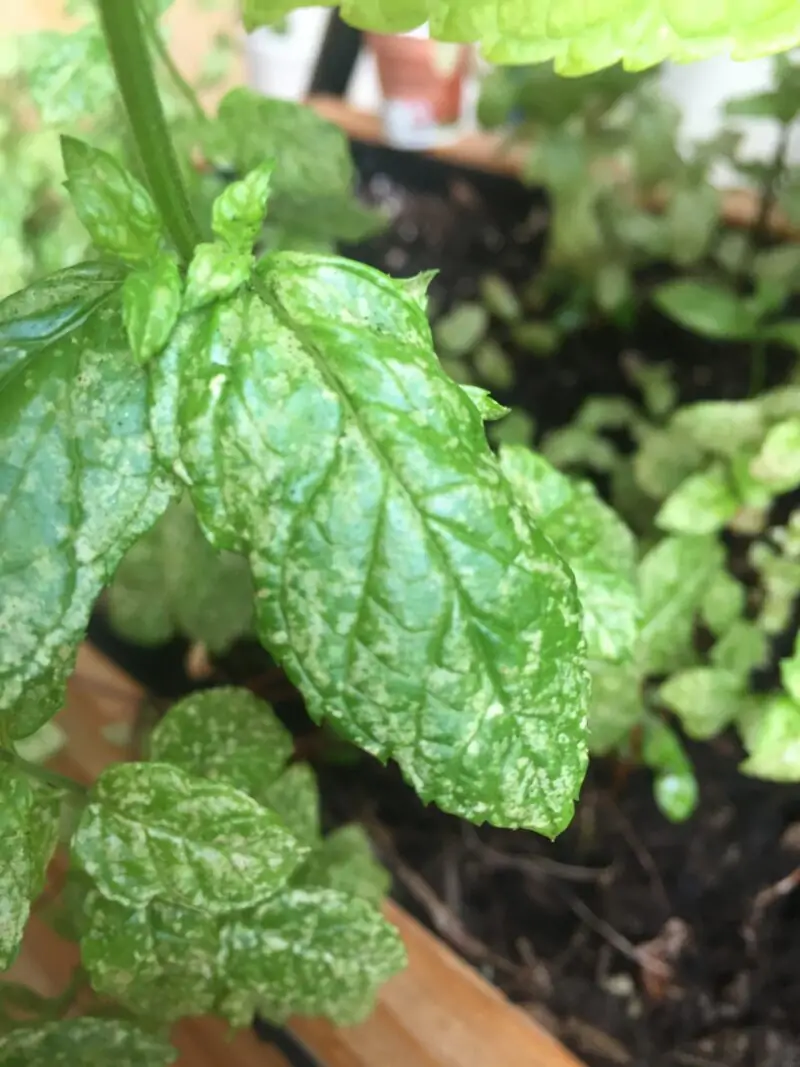
The presence of white spots on mint leaves might be concerning since they could be signs of fungus (powdery mildew), pests (spider mites/thrips), or viral infections (mosaic virus). We’ve addressed some often asked inquiries concerning these bothersome white patches below:
Mint leaves can turn white due to various reasons, including powdery mildew, pests, or viral diseases. Proper care and early detection can help prevent and control these issues.
Yes, a mixture of baking soda and water can help control powdery mildew by altering the pH on the leaf surface, making it less favorable for the fungus.
Mint leaves with white spots are generally safe to eat, as long as they are not infected by harmful bacteria, fungi, or pests. However, the flavor may be affected.
Yes, some issues like powdery mildew can spread from one plant to another through spores carried by air, insects, or contaminated tools.
Yellow spots and white mass on mint leaves may indicate pest infestations or nutrient deficiencies. Regular monitoring, proper care, and prompt treatment can help prevent these issues.
To prevent powdery mildew, maintain proper hygiene, provide adequate ventilation, and avoid overwatering. You can also use a baking soda spray as a preventive measure.
Older leaves are more susceptible to infections and pests as they are closer to the soil and may have lower defenses compared to younger leaves.
Mint can be grown alongside other herbs, but it’s essential to provide adequate spacing and monitor for any signs of pest infestations or diseases, as some issues can spread between plants.
To prevent your mint from pest attacks, maintain proper plant hygiene, monitor for early signs of infestation, and use organic or chemical treatments as needed.
Water mint plants frequently during hot summer months, but avoid overwatering. Allow the soil surface to dry out between waterings to reduce the risk of fungal infections.
Prevention is key! Minimize the risk of white spots on your mint plant by:
Watching for signs of infections or pest infestations and treating them quickly.
Removing dead leaves regularly to maintain proper hygiene.
Avoiding overwatering, which can lead to moist conditions that promote fungal growth.
Providing adequate ventilation and spacing plants well.
The most common reason is not detecting early symptoms or delaying treatment. Delayed treatment can lead to spreading, making it harder to control.
Incorrect nutrient levels or poor soil drainage and water retention could also be responsible. In such cases, correcting these conditions may help stop the spread.
Conclusion
Maintaining a healthy mint plant requires regular maintenance and attention. Proper care includes providing enough sunlight, good quality soil with nutrients, regular monitoring for pests like spider mites or infections such as powdery mildew, pruning damaged leaves, and managing soil moisture levels. Keeping a close eye on the leaves of your mint plant is essential to identify any issues, such as white spots on the leaves, white mold, or white rust.
We’ve answered some FAQs about white spots on mint leaves – remember that early detection is key! It is essential to check both the tops and undersides of the leaves, as white spots or dots may appear on either side. Promptly treating any issues will ensure optimal flavor when using your fresh herbs in cooking or brewing tea. While mint plants are prone to white spots, taking preventive measures such as spraying your mint with a mild solution of water and baking soda, avoiding planting mint near other plants susceptible to mildew, and regularly removing affected leaves can help keep your plant healthy.
Despite the appearance of white spots, mint leaves are still delicious and generally safe to eat, as long as they aren’t infected by harmful pests or fungi. Stay vigilant and take proper care of your mint plant to enjoy fresh, flavorful mint in your meals and beverages.